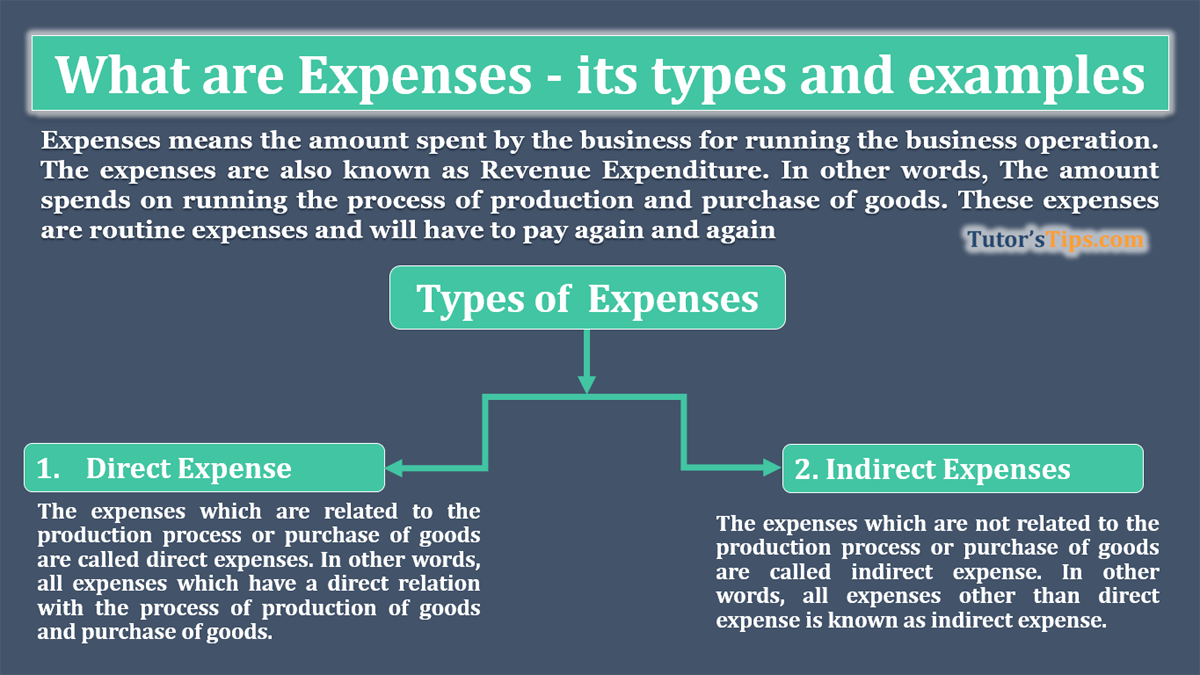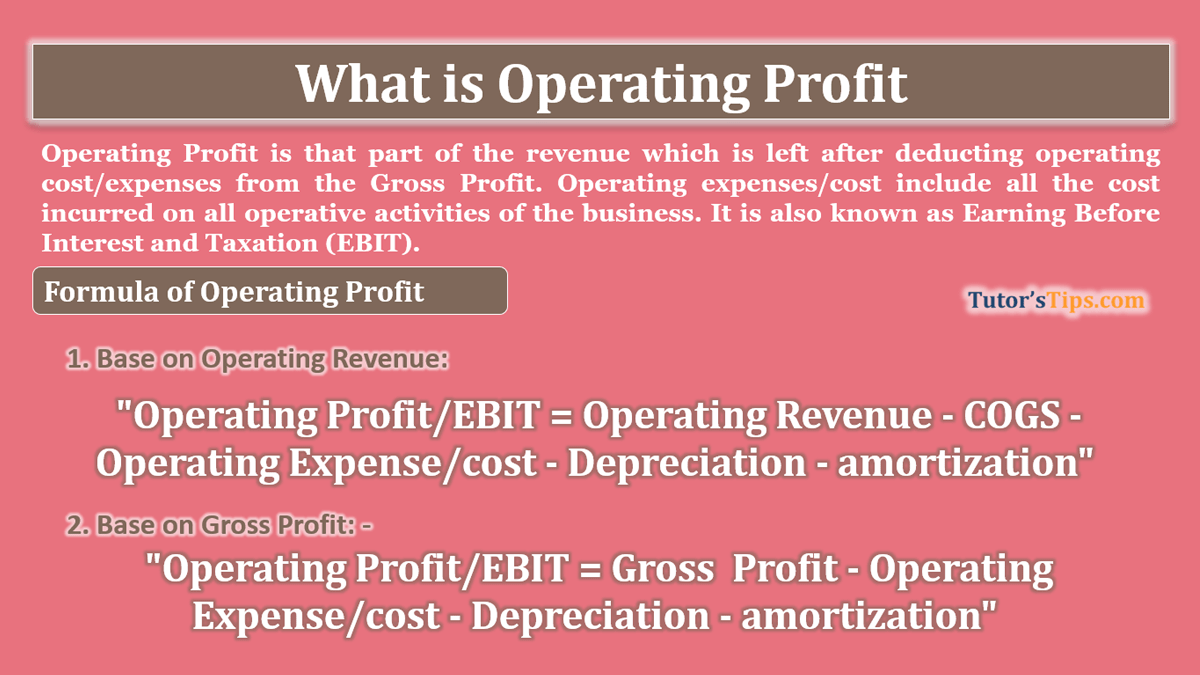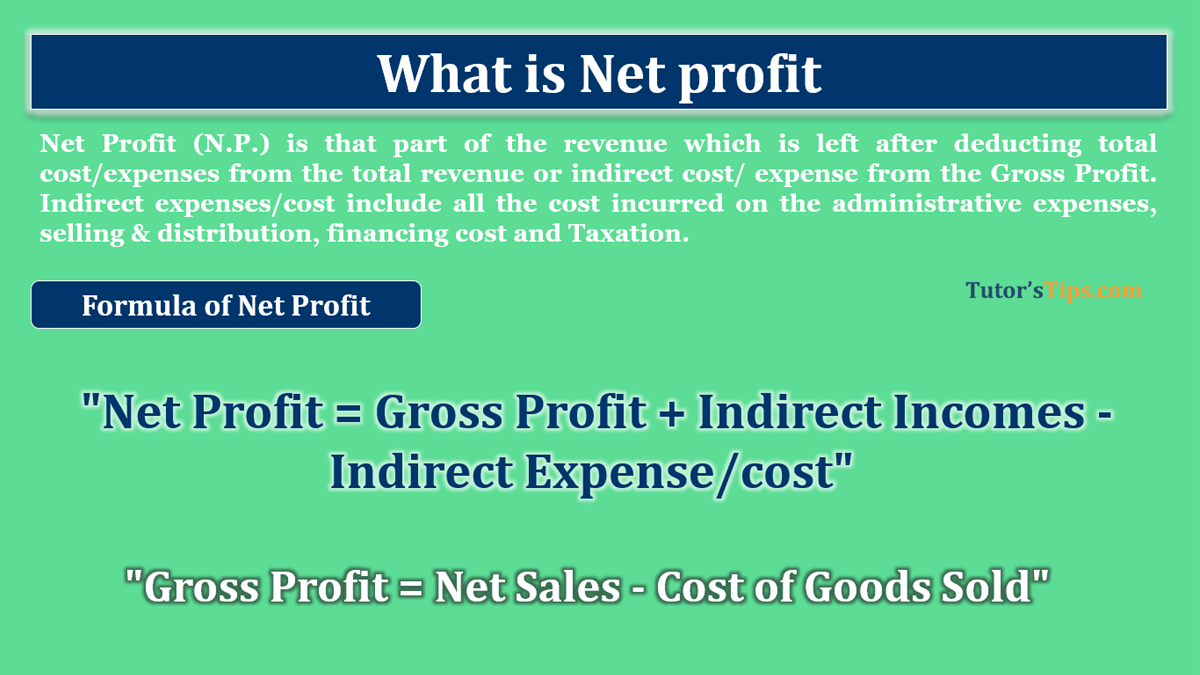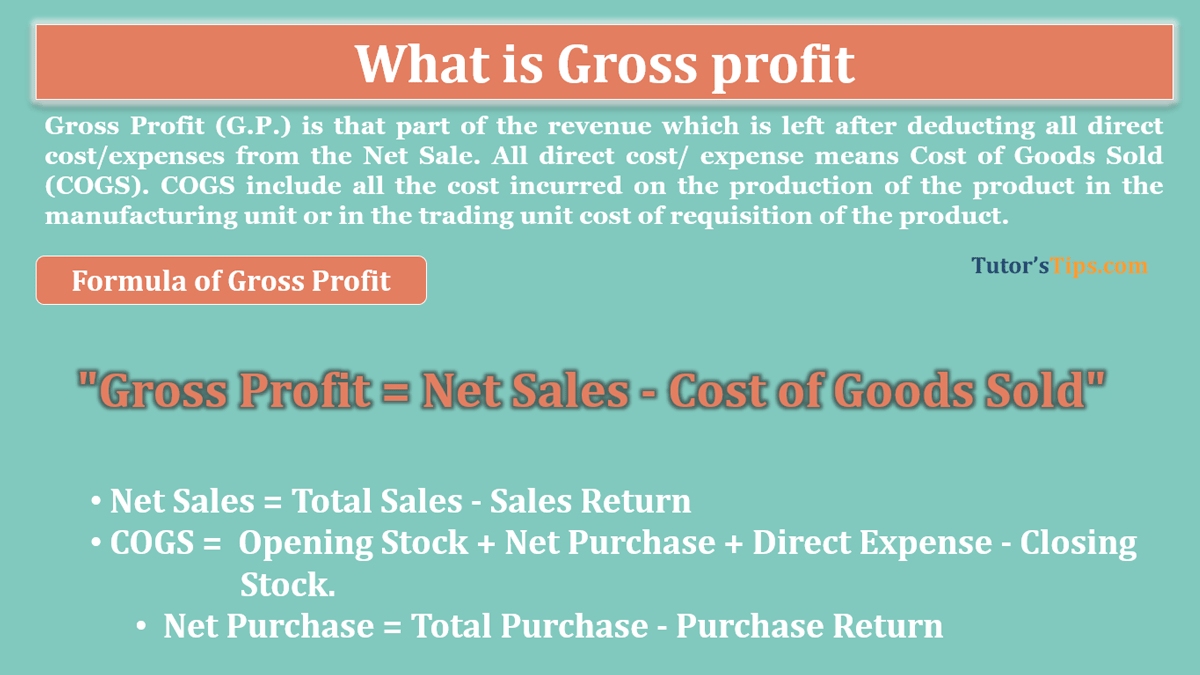The amount spent to enjoy benefits from goods and services is known as Expenses. In this article, we will cover the meaning and types of Expenses.
What are Expenses
It means the amount spent by the business for running the business operation. The expenses are also known as Revenue Expenditure. In other words, The amount spends on running the process of production and purchase of goods. This is a routine expense and will have to pay again and again
In short, we will drive the benefit from these expenditures in the current year only.
The types of Expense
It can be divided into two types. These are explained as under:
1. Direct:-
The amount which is related to the production process or purchase of goods is called direct expenses. In other words, all amounts have a direct relation with the process of production of goods and purchase of goods.
Why this is separated into a different group?
Because with the help of these we can calculate the Gross profit of the business in a particular financial year.
These are differed as per the model of business. We are further classified them into two major subcategories explained as follows: –
- For the Manufacturing Business model
- For the Trading Business Model
Examples: –
- In Manufacturing Concern:
- Purchase of Raw Material
- The wages paid to the factory worker
- Factory Staff salary
- Factory Lighting and Heating
- Freight or carriage inwards
- Octroi on the Purchase of Raw Material
- Factory rent
- Factory utilities
- Factory building insurance
- Depreciation on Plant and Machine
- Equipment setup costs
- Equipment Repair and maintenance
- Factory supplies
- Factory small tools and die
- Import Duty
- Custom Duty
- Dock Charges
- Fuel, Gas, and Water
- Royalty
- Packaging Material or charges
- Commission on Purchase
- In trading Concern
- Purchase of Goods
- Freight or carriage inwards
- Octroi on the Purchase of goods
- Unloading of goods
- Import Duty
- Custom Duty
- Dock Charges
- Packaging Material or charges
- Commission on Purchase
2. Indirect:
The amount which is not related to the production process or purchase of goods is called indirect expense. In other words, all amounts other than the direct expenses are known as indirect expenses. These are separated to calculate the Net profit of the business in a particular financial year.
Advertisement-X
Examples: –
- Salary of the office employees
- Electricity Bill
- Rent
- Taxes
- Freight or carriage outwards
- Traveling Expense
- Printing and Stationery
- Postage and Telegram
- Commission paid on Sales
- Publicity and Expense
- Accounting and Auditing Fee
- Legal fee
- Office Expense
- Repair and maintenance
- Staff Welfare
- Group Insurance of employee
- Depreciation
- Bad debts
- Office building insurance
- Mobile and Telephone Expense
- Interest
- Miscellaneous Expense
Differences between the Direct and Indirect:
Direct and Indirect Expenses: Differences
You can also read the following topics: –
- Assets – Meaning, Definition, Types, and Examples
- Liabilities – Meaning, Types, and Examples
- What is Capital – Meaning and Example
Thanks Please share with your friends
Comment if you have any question
Check out Financial Accounting Books @ Amazon. in







1 Comment